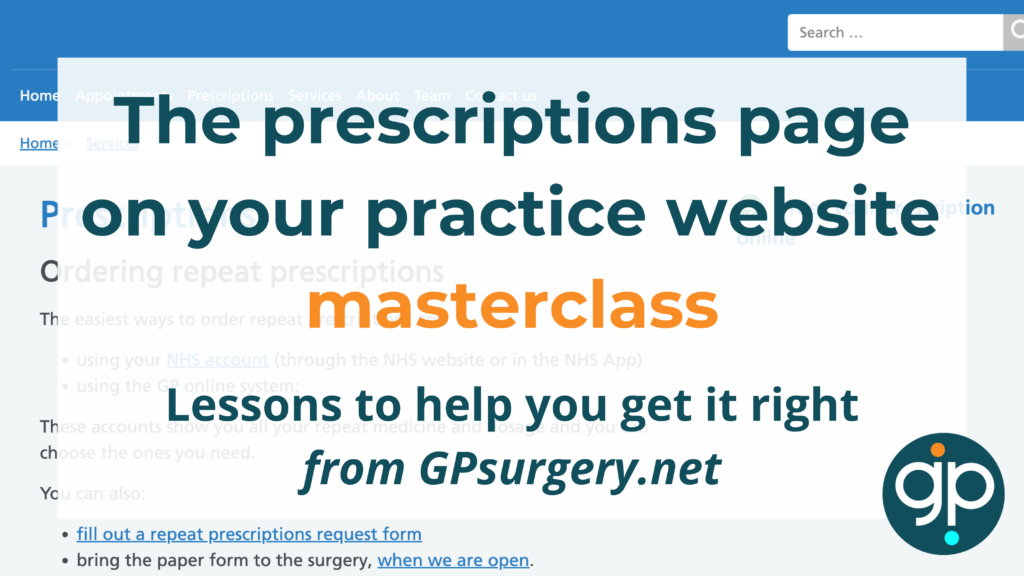The Prescriptions page on your GP practice website is a big deal. Tim Green* explains how to set up the page to optimise patient journeys across your website.
Your Prescriptions web page is one of 3 critically important pages highlighted by NHS England in guidance on Creating a highly usable and accessible website.
This is because one of the main reasons patients will come to your website is to find help and information on how to manage their prescriptions.
Easy to find
There are 3 key routes patients will take to navigate to information about prescriptions:
- using the search box
- scanning the main menu
- scanning the homepage for recognisable key words.
It’s essential patients can find the Prescriptions page easily whichever route they take.
Here are our recommendations:
- publish all information about prescriptions on a single page with the word ‘Prescriptions’ in the title
- add the Prescriptions page to the main menu
- add a quick link to the Prescriptions page on your homepage.
Remember: simplifying the patient journey is always in the best interests of your patients.
Easy to understand
With over 7 million adults in the UK reading at (or below) the level of a 9 year old, it’s essential to write content for your Prescriptions page that is easy for your patients to understand.
Aim for a reading age of 9-10 and check your page using the Hemingway Editor. This free tool makes it easy to write simple and usable copy, and gives suggestions and corrections to help you get it right.
Go to the Hemingway Editor: hemingwayapp.com
Easy to navigate
Your Prescriptions page is not just for ordering medication.
The NHS guidance asks for this page to cover 7 distinct areas:
- ordering repeat prescriptions
- collecting prescriptions, including information about nominating a pharmacy
- medication queries
- medication reviews
- prescription charges
- disposing of old medication
- about pharmacies.
These topics should be organised under clear headings and should be in paragraphs of no more than 60 words.
Easy this, easy that – it all sounds quite difficult! :(
Don’t panic if you don’t know where to begin with your Prescriptions page.
The NHS has produced excellent templates which you can copy for free and adapt to the priorities and workflow of your own practice.
Copy the Prescriptions page template.
Your website supplier should also help you to prioritise the needs of your patients. Ask them about how they can help you to structure and populate your site with easy patient journeys at the heart of the process.
Finally, if you’re at an extremely busy practice with no time to write your own copy, you could look into a managed website service.
Whatever you decide to do, remember to prioritise your patients. Making their lives easier will undoubtedly reduce the pressure on your reception team, care navigators and wider practice staff.
*Tim Green is co-founder of website provider GPsurgery.net. The GPsurgery.net Navigator product helps practices prioritise the requirements of the NHS benchmarking and improvement tool, as well as creating a highly usable GP website.
